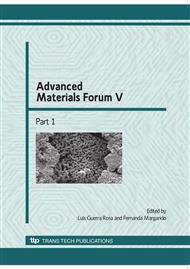p.657
p.665
p.671
p.676
p.682
p.688
p.697
p.703
p.709
Consolidation of Cu-nDiamond Nanocomposites: Hot Extrusion vs Spark Plasma Sintering
Abstract:
Due to their interesting properties copper-based materials have been considered appropriate heat-sinks for first wall panels in nuclear fusion devices. The concept of property tailoring involved in the design of metal matrix composites has led to several attempts to use nanodiamond (nDiamond) as reinforcement. In particular, nDiamond produced by detonation has been used to reinforce copper. In the present study, powder mixtures of copper and nDiamond with 20 at. % C were mechanically alloyed (MA) and consolidated via hot extrusion or spark plasma sintering (SPS). The hardness evolutions as well as the structural characterization of as-milled nanocomposite powders and consolidated samples are reported. Density measurements indicate that the consolidation outcome varies significantly with the process used. Transmission electron microscopy (TEM) inspection of the extrusion consolidated sample revealed bonding at the interface between copper and nDiamond particles. The nDiamond size distribution was determined from TEM observations. The results obtained are discussed in terms of consolidation routes.
Info:
Periodical:
Pages:
682-687
Citation:
Online since:
January 2010
Price:
Сopyright:
© 2010 Trans Tech Publications Ltd. All Rights Reserved
Share:
Citation:


